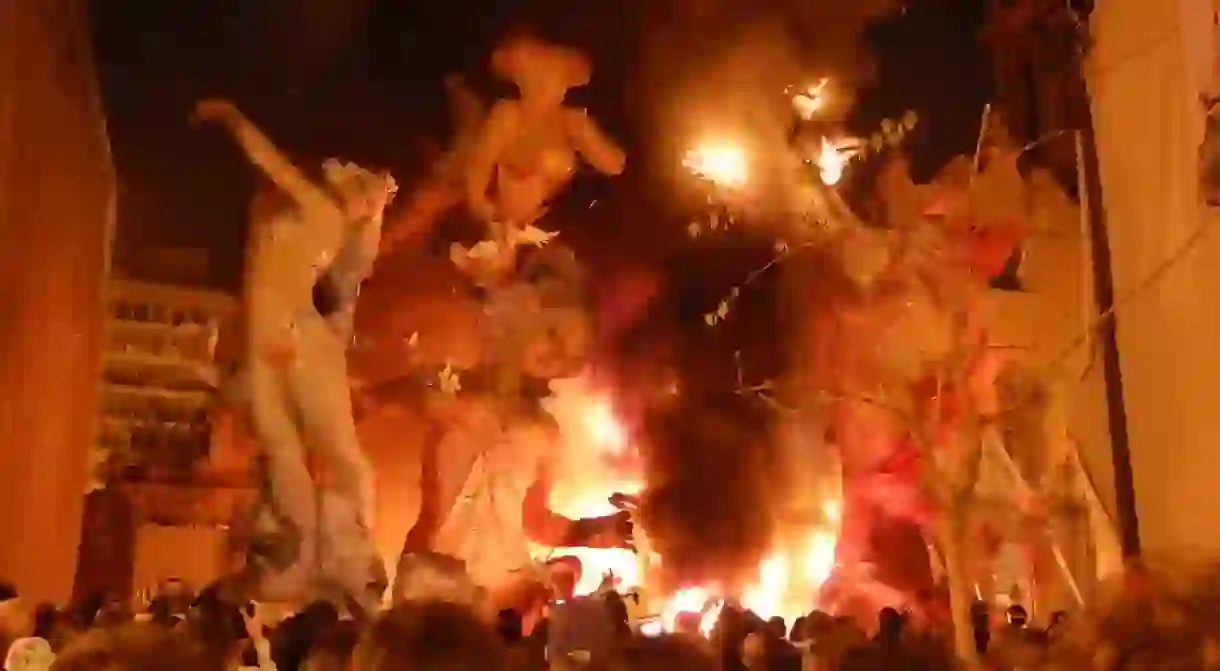How Valencia's Las Fallas Festival Became Spain's Loudest Fiesta

Walking down a street in Valencia’s Old Town, the air is tinged with the scent of gunpowder and nearby windows rattle to the rhythm of explosions coming from the main square. It might feel alarmingly as if you’ve stepped into a war zone, but if you’re visiting in mid-March, this is all perfectly normal. This is Las Fallas.
Spain is famous for all kinds of crazy festivals, but Las Fallas must be the most explosive. The fire festival has been gaining fame and popularity outside of Spain in recent years, especially since it was given UNESCO Heritage status in 2017. People in Valencia prepare for it – and talk about it – all year round.
The main festival dates are March 15–19, but excitement gradually builds in the weeks before, with official events starting at the end of February. The city grinds to a halt for the festival, and becomes one big outdoor art gallery, party zone and firework display with firecrackers going off on every street from morning until night. Each of the 350 neighbourhoods builds their own falla, a giant, elaborate papier-mâché sculpture up to nine metres (30 feet) high, and hosts paella-cooking competitions and street parties.

Every day from March 1–19, you can, and must, experience the mascletà. It’s a firework display held at 2pm, which seems pointless until you realise you’re supposed to feel it, not watch it. This uniquely Valencian tradition is all about the sound, vibration and rhythm of the countless explosions over a five-minute period, which can provoke strong emotions among the crowd, as well as nearly deafening them.
Nobody seems to know exactly when or why this tradition started. The mascletà was at first held only on the final day of Las Fallas, but people enjoyed it so much they started having more and more of them. Nowadays, the daily display is an important and sometimes emotional event for Valencians, who usually want to stand as close to the explosives as possible to feel their full impact. In the past, it was possible to stand almost right next to the bags of gunpowder that are hung in long lines across part of the main square, Plaza del Ayuntamiento. After enough people lost their hearing, though, that the city council put up barriers to keep the crowd at a safer distance.

The festival itself dates from the Middle Ages, and started with Valencian families and neighbourhoods burning piles of rubbish at the end of winter. They started making figures to sit atop the bonfires, which often poked fun at something people in a neighbouring village had done over the last year. It came to signify the end of winter and new beginnings. The sculptures became ever more elaborate over the years, until we ended up with the masterpieces you see today, which often poke fun at politicians and celebrities.
The daily explosions, both official and unofficial, get steadily louder and more intense as the festival continues, with the biggest, most deafening mascletà held on the final day.
At around midnight on March 19, all 350 fallas sculptures are set alight, bathing the city in a surreal orange glow. Extra firefighters are drafted in from all over the country and even from abroad to help control the flames. The party mood gives way to quiet reverie as crowds gather to watch the sculptures vanish. By the next morning, the mobile discos have packed up and left, the fireworks have ceased, the city streets have been cleaned and you wouldn’t know that anything had happened here at all.













